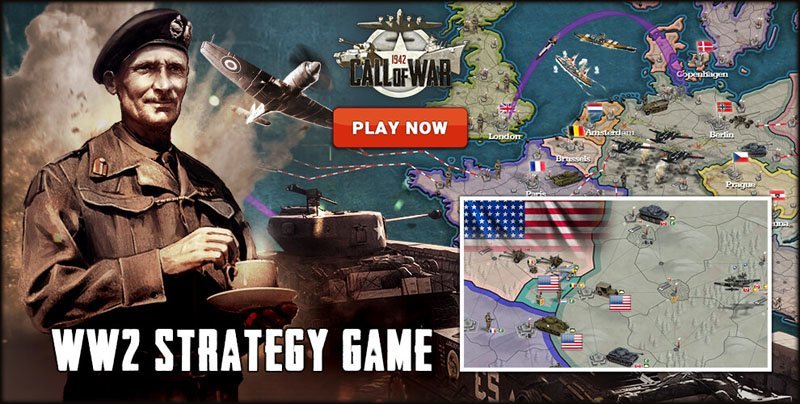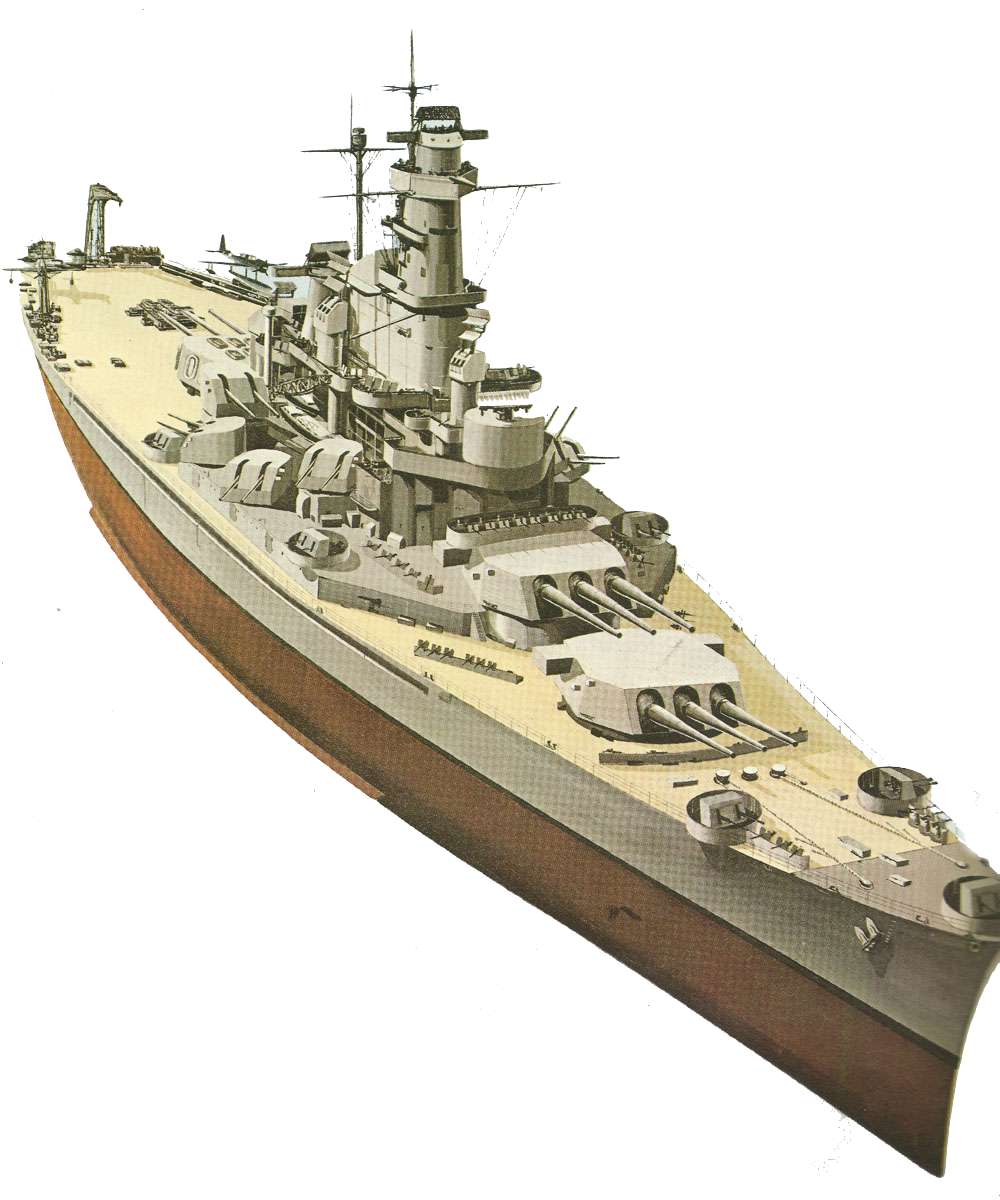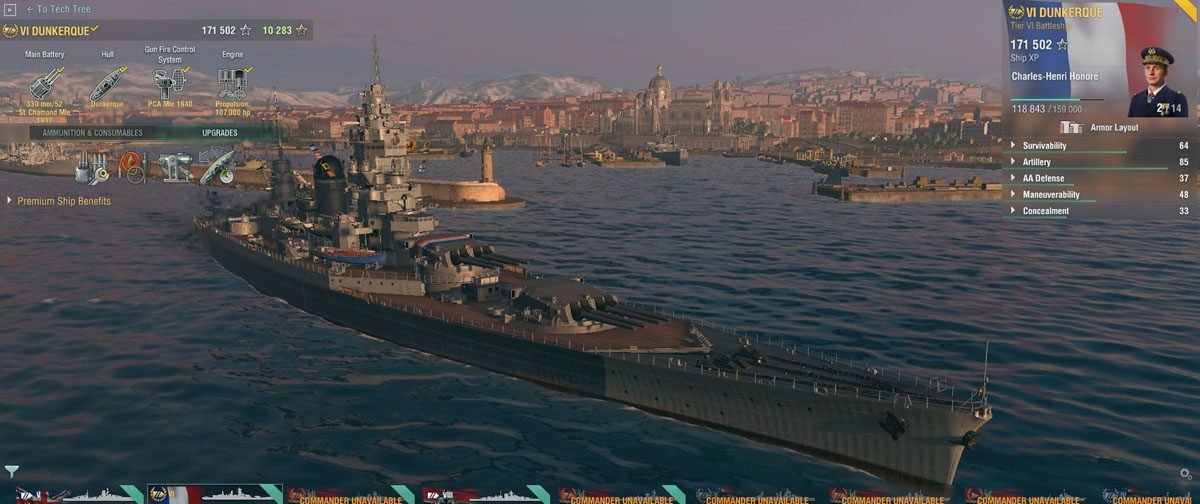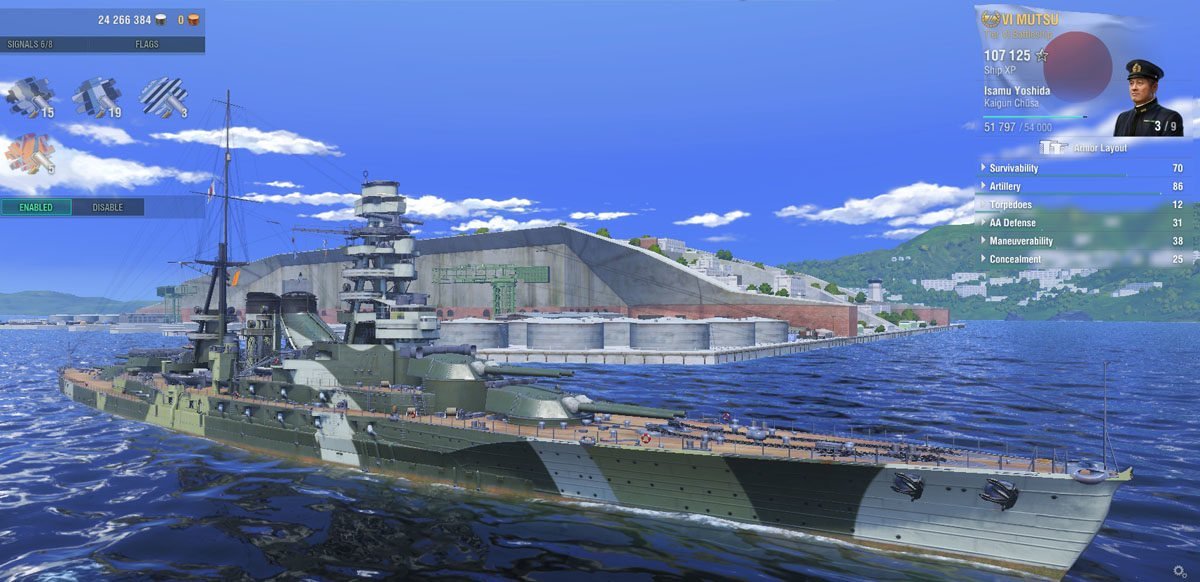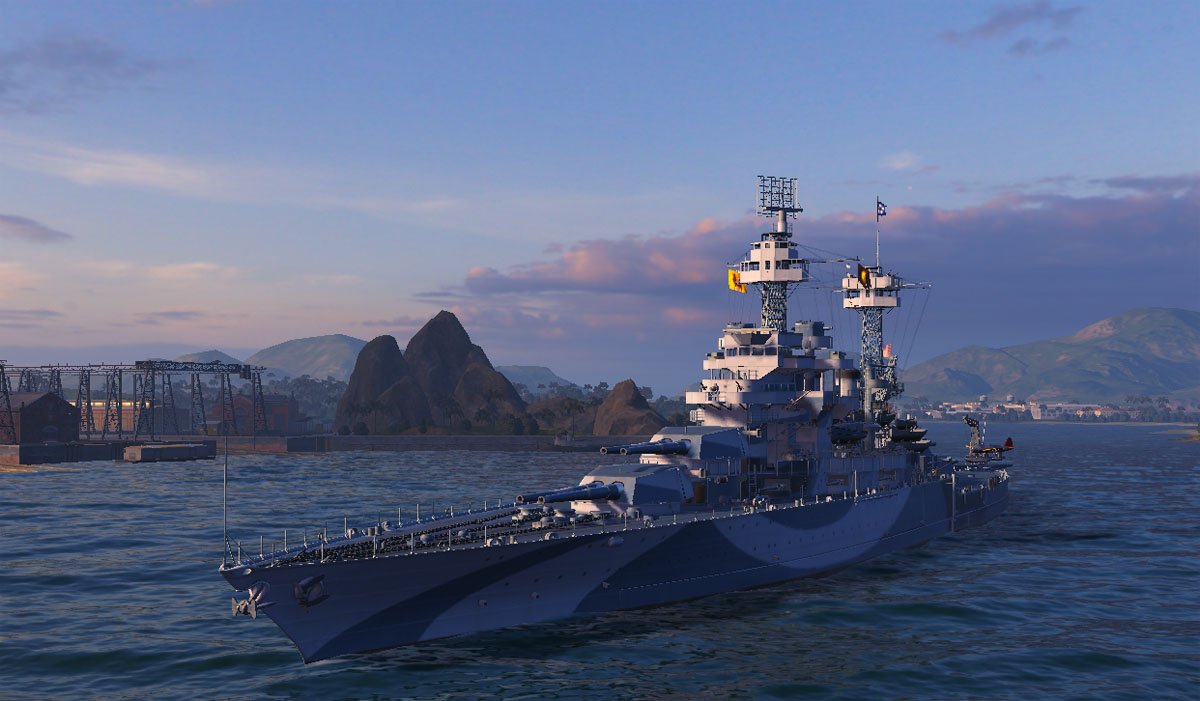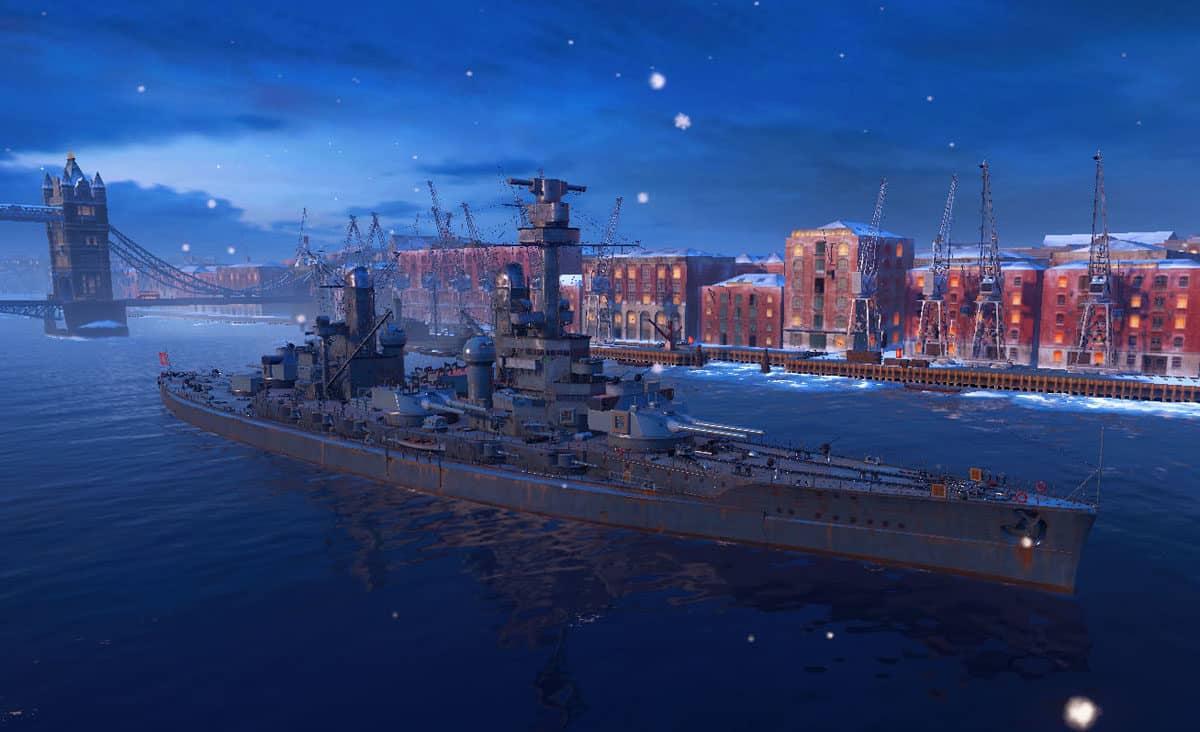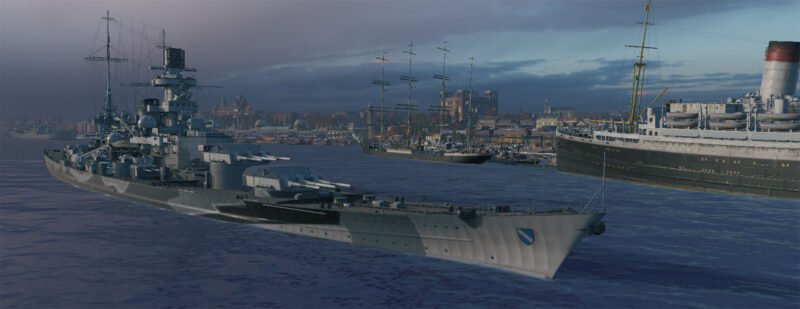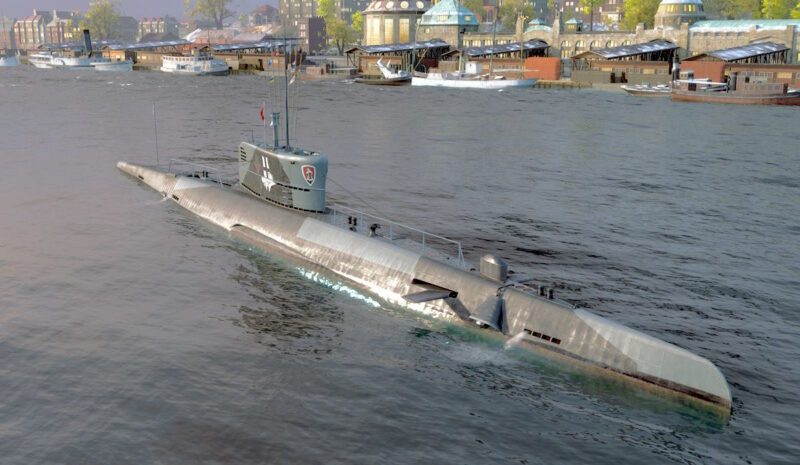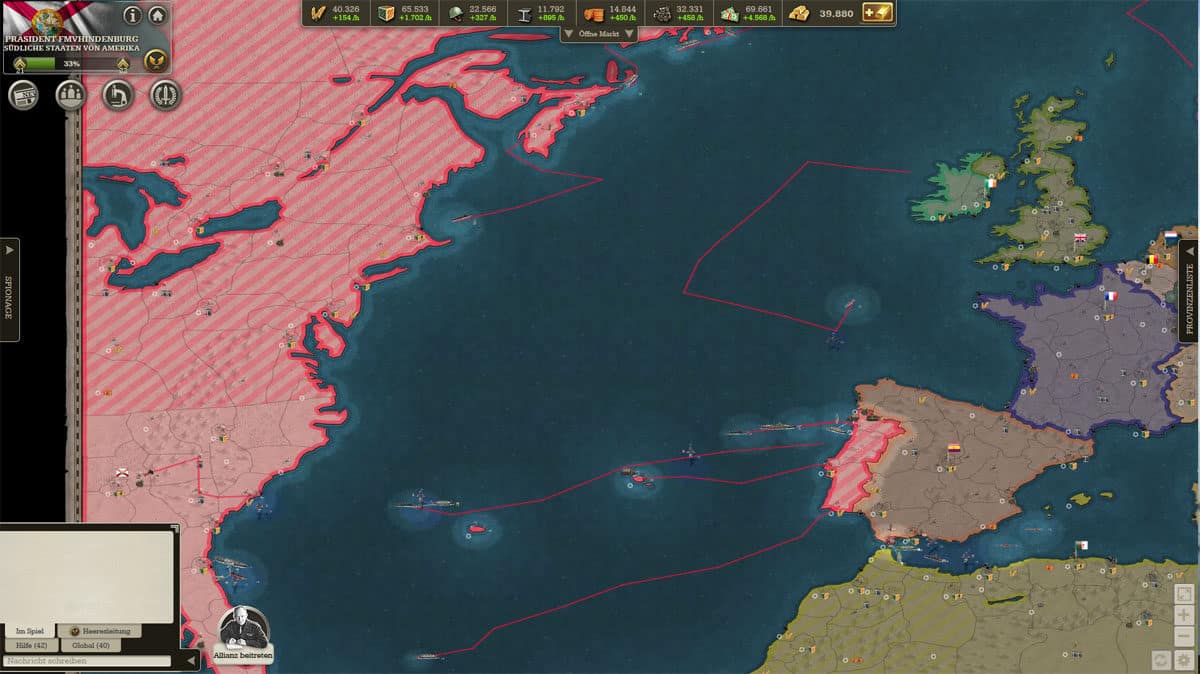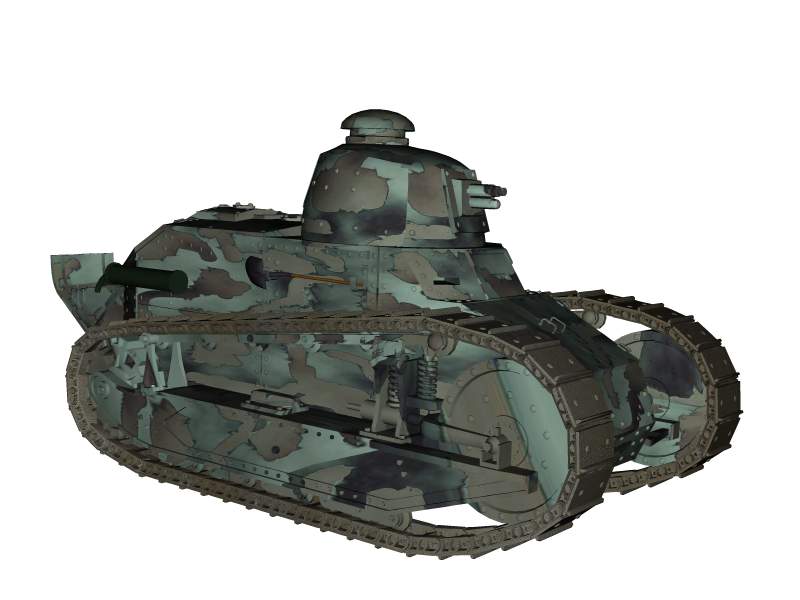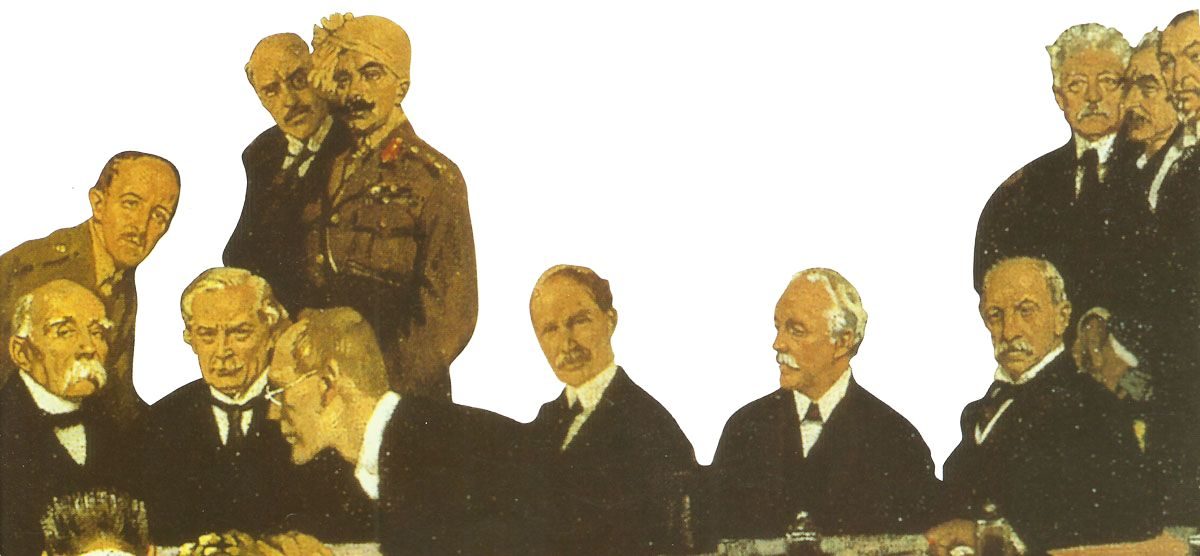Revolutionary British battleship HMS Dreadnought: The Russo-Japanese War of 1904-05 showed the world the need for a radical change in the design of warships. In most major navies these plans were pushed forward, but it was in Britain that the Dreadnought became the first modern battleship to be completed.
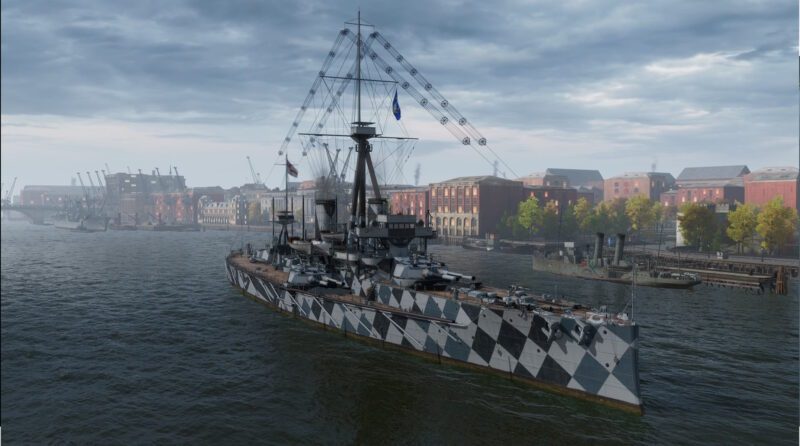
HMS Dreadnought
Table of Contents
It was on ‘Trafalgar Day’ in 1904 that 63-year-old ‘Jacky’ Fisher was appointed First Sea Lord. He immediately implemented a number of reforms designed to bring the Royal Navy out of the long slumber of ‘Pax Britannica’ and into readiness for war, as he saw a major conflict as inevitable.
Within a year, the Dreadnought was launched as the best possible concept among a series of designs proposed by the Committee of Designs. Fisher later claimed that he had had the idea for such a warship since 1900, when he was the naval commander in the Mediterranean, and had discussed it at length with William Gard, the chief designer in Malta.
Fisher was not alone, however, as the professional publications of all the major naval powers were quite similar and influenced by the flourishing poetry of the Italian Vittorio Cuniberti, whose theories were not particularly recognised at home. His ‘dream ship’ was fast and carried the largest number of the largest guns available, which with its long firing range was to cover the unfortunate battleships of the time with a terrible, converging artillery barrage.
As Great Britain had the largest fleet in the world, it had little interest in turning it into ‘old iron’ overnight. But the impetus eventually came in the form of significant improvements in torpedo and gun performance, demonstrated by unprecedented combat distances in the naval engagements of the Russo-Japanese War of 1904-05.
Fisher’s sense of urgency may also have been heightened by the knowledge that the Americans were about to pre-empt him, as Congress had approved plans for Admiral Sim’s ideas for two new Michigan-class battleships in early 1905.
Construction
The Dreadnought thus became a huge propaganda success! The record construction time of only 366 days could never be beaten by any other battleship, and it was also the first battleship with a uniform heavy artillery of the same calibre and had turbine propulsion. It was the first ship of the new dreadnought type and is considered the ancestor of all modern battleships of the 20th century.
It was also considerably larger than any British battleship built to date, helped by the fact that the size restrictions for docks in Great Britain had been relaxed in the meantime, which had an unfavourable effect on the previous ‘Lord Nelson’ and King Edward VII classes.
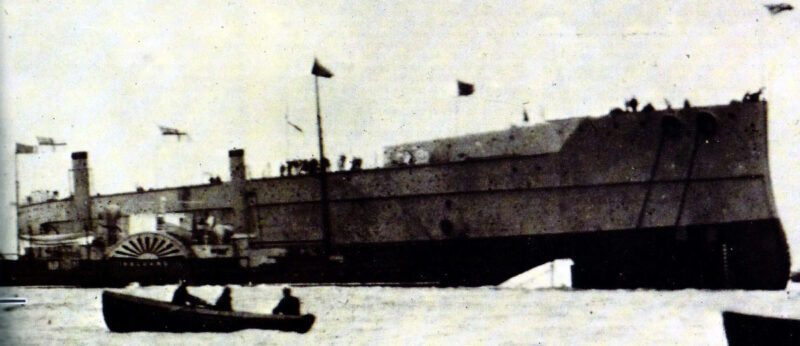
As the forward turret was on a raised forecastle and one deck higher than on any previous British battleship, the Dreadnought was very seaworthy.
However, her outstanding features were the installation of turbines for the first time in a battleship, her aggressive appearance and the record construction time. The latter was partly due to the excellent organisation at the shipyard in Portsmouth, but mainly to the fact that some of the building material required, most of the secondary machinery and all the turrets could already be used by two planned Lord Nelson class ships. However, as this material was used for the Dreadnought, the completion of the two Lord Nelson class ships was considerably delayed.
Particularly important were the already available turrets, which took more than two years to complete and would have been the ‘bottleneck’ in the commissioning of the Dreadnought.
Fisher originally favoured 10-inch (254 mm) guns over 12-inch (305 mm guns) because of the higher rate of fire and the fact that more tubes could be accommodated. However, Admiral Bacon, a member of the committee, persuaded him that fewer large guns, together with high velocity, would lead to ‘scientific and practical firing’.
Once this argument was accepted, it led directly to the bold adoption of the steam turbine, which had not yet been tested in the required power range. Together with oil firing, this would necessitate piercing the bulkheads on a far more modest scale than was required for coal-fuelled ships.
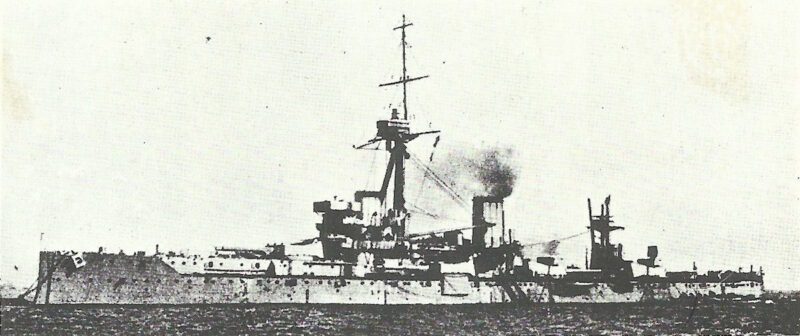
HMS Dreadnought provided the Royal Navy with a ship that could run reliably at relatively high speed and that could utilise its armament in all conditions. The firing curves were good, but the layout reflected Fisher’s obsession with pursuit fire, tempered by practical considerations about the effects of the explosions. After all, a single large gun calibre simplified both magazine layout and fire control.
The reasons for omitting a serious secondary battery were flawed and were corrected in subsequent classes.
HMS Dreadnought displaced 18,410 tonnes at normal load and 21,060 tonnes at deep load, almost 3,000 tonnes more than the Lord Nelson class. She had a length of 527 ft (160.6 metres), a breadth of 82 ft (25.0 metres) and a draught of 29.5 ft (9.0 metres) at deep load. Her crew consisted of 773 men and later increased to 810 men.
However, the cost of building the Dreadnought was enormous and led to financial burdens for the British government. In addition, the maintenance and modernisation of the ship required considerable resources.
Armour protection
The revolutionary construction of the Dreadnought was due almost entirely to First Sea Lord ‘Jackie’ Fisher – as were the embarrassing, numerous flaws in the design. Although the ‘Committee on Designs’ he set up was made up of military and civilian experts, it was dominated by Fisher. The question of what kind of warships made sense was practically ignored, and Fisher personally determined what was desired. Since he was obsessed with high speed and powerful main artillery with a long firing range, there was not much left for armour protection – which was worse than on the previous Lord Nelson class – and for a reasonable secondary armament.
The Dreadnought’s armour was a combination of Krupp steel and nickel steel. It had a maximum thickness of 12 inch (305 mm) in the most vulnerable areas. The armour was designed to withstand the impact of heavy shells.
Armament
The concept of the Dreadnought was only somewhat saved when gunnery with fire control devices was introduced in 1910, allowing sufficient accuracy with the main artillery at longer ranges. However, the Dreadnought itself only acquired an artillery directional device after the outbreak of war in 1915. By this time, however, it was already obsolete and was not used in the Battle of Jutland. Her speed was no longer outstanding at this time, and her underwater protection against torpedoes was also inadequate.
The HMS Dreadnought was the first battleship to be equipped exclusively with large-calibre guns. She had ten 12-inch (30.5 cm) guns in five twin turrets, one of which was located on the forward half of the ship and two on the aft half, as well as one each on the left and right of the superstructure. The guns had a range of up to 9.6 miles (16 km) and could fire shells weighing up to 1,036 lb (470 kg). In addition, the Dreadnought had 27 smaller guns for defence against torpedo boats.
Fisher also insisted that the ship had to fire six guns each towards both the bow and stern during the intended pursuit or disengaging manoeuvres, while the firepower of the broadsides was considered less important by him. As a result, one gun turret was mounted on starboard and one on port next to the superstructure, which could not rotate 360° and therefore only one of them could fire on a broadside.
In addition, the 3-inch (7.6 cm) guns were too weak to fend off torpedo boats or destroyers.
Equally, disastrous was the installation of the tripod foremast behind the forward funnels, as the conning position was constantly enveloped in smoke. Fisher also insisted on the installation of a ramming stem.
Drive
However, the new type of turbine propulsion was a resounding success. At the time the Dreadnought was designed, it had not yet been trialled on the cruiser Amethyst, but its designer Charles Parsons was able to guarantee its use based on experience with merchant ships.
Compared to the conventional piston engine, the first turbines consumed a lot of fuel at cruising speed, but they could work for longer periods with extreme power and ran more quietly. As the centre of gravity of these engines was low down in the ship’s hull, the main artillery could also be positioned higher.
HMS Dreadnought was powered by 24 coal-fired steam boilers driving four Parsons steam turbines. She had a top speed of 21 knots and a range of 6,000 nautical miles at 10 knots.
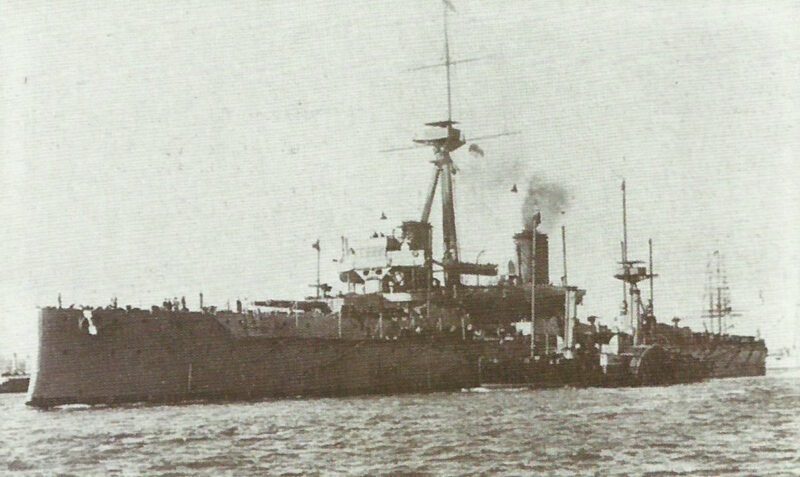
During the First World War, the Dreadnought was mainly used as the flagship of the squadron of ships-of-the-line (now called ‘pre-Dreadnoughts’) stationed at Sheerness, which was intended to fend off possible German attacks on the Thames Estuary. This never materialised, however, and so the originally revolutionary battleship never fired her guns in battle and was transferred to the reserve fleet before the Armistice. However, Dreadnought was the only battleship ever to sink a submarine – the German submarine U-29 on 18 March 1915 by ramming!
Dreadnought was removed from the fleet list on 31 March 1920 and scrapped in February 1923.
The ‘Dreadnought Committee’ was also tasked with the specifications for a super armoured cruiser, which was later called a battlecruiser. As a 30 per cent increase in speed over comparable battleships was sought, the result was a large ship, packed with propulsion machinery and protected to an extent that was only effective against conventional armoured cruisers. The ship had the same 10-inch (305mm) main battery calibre as the Dreadnought. The first of these ‘soft’ monsters was the HMS Invincible, which was completed some 15 months later in March 1908.
Other navies follow suit
The HMS Dreadnought was the first ship of the new type of dreadnought and surpassed the previously predominant ships of the line in every respect. With its revolutionary design and armament, it set new standards for all subsequent battleships. It therefore had an enormous influence on the strategies of naval forces worldwide. The development of battleships with ever-increasing firepower and armour was a direct result of HMS Dreadnought.
The introduction of the Dreadnought had a massive impact on other nations, who were forced to modernise their own fleets to keep up with the new technology. It is argued among historians that this had led to an arms race and increased tension between nations.
Germany:
As a direct result of the revolutionary dreadnought, the Nassau-class battleships were built in Germany. The Nassau was the first modern battleship of the Imperial Navy. She was the first ship to be equipped with a main armament of twelve 11-inch (28 cm) guns and was thus on a par with the dreadnoughts of the British Navy. The Nassau was commissioned in 1908 and was in service until the end of the First World War.
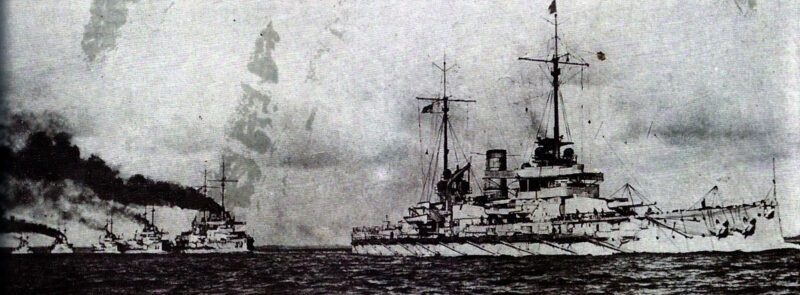
USA:
In the USA, the USS South Carolina was the first modern Michigan-class battleship of the US Navy. She was commissioned in 1908 and was the first ship to be equipped with a main armament of eight 12-inch (30.5) cm guns. The South Carolina was more heavily armoured and the arrangement of the main artillery was better than on the Dreadnought, setting new standards in naval warfare.
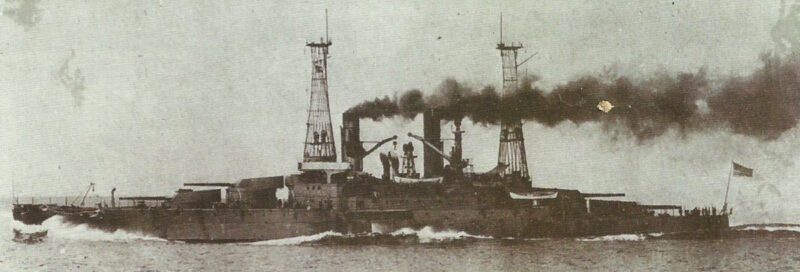
Japan:
In Japan, the Satsuma was the first battleship of the Satsuma class of the Imperial Japanese Navy. It was the first ship to be equipped with a main armament of twelve 12-inch (30.5 cm) guns and was thus on a par with the dreadnoughts of the British Navy. The Satsuma was commissioned in 1910 and was in service until the end of the First World War.
France:
The Courbet of the eponymous class was the first modern French battleship. She was commissioned in 1911 and was the first ship to be equipped with a main armament of twelve 12-inch (30.5 cm) guns. The Courbet was faster and better armoured than the Dreadnought and thus also set new standards in warfare at sea.
Russia:
The Gangut was the first Gangut-class battleship of the Imperial Russian Navy. She was commissioned in 1914 and was the first ship to be equipped with a main armament of twelve 12-inch (30.5 cm) guns. The Gangut was faster and better armoured than the Dreadnought, setting new standards in naval warfare.
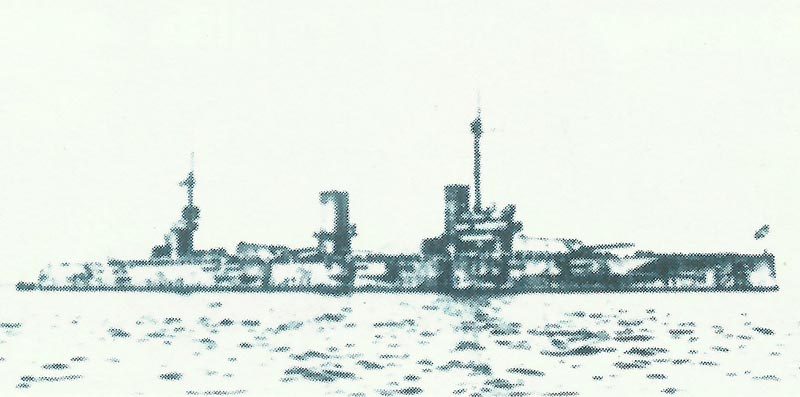
Service of HMS Dreadnought
After completion on 2 October 1906, sea trials were carried out in the Mediterranean and to Trinidad between 5 January and 23 March 1907.
From April 1907 to March 1909 flagship Nore and then flagship of the 1st Division of the Home Fleet until March 1911.
She was then refitted in Portsmouth, then deployed with the 1st Division of the Home Fleet from May to December.
From December 1912 to May 1916 flagship of the 4th Battle Squadron of the Grand Fleet. In the meantime, in 1913, the Grand Mars sterns were removed. On 18 March 1915, she rammed and sank the German submarine U-29. In 1915, she was refitted with an artillery aiming device, the foremast was shortened and the 3-inch (7.6 cm) secondary guns were improved and rearranged. In the spring of 1916, another small refit was carried out.
HMS Dreadnought then became the flagship of the 3rd Battle Squadron in Sheerness from May 1916 until March 1918. In 1916/1917, the protection of the ammunition compartments was improved.
From March to July 1918, she was again with the 4th Battle Squadron of the Grand Fleet, before being on the reserve fleet list until March 1920. She was removed from the fleet list on 31 March, sold for scrapping in May 1921 and scrapped from February 1923.
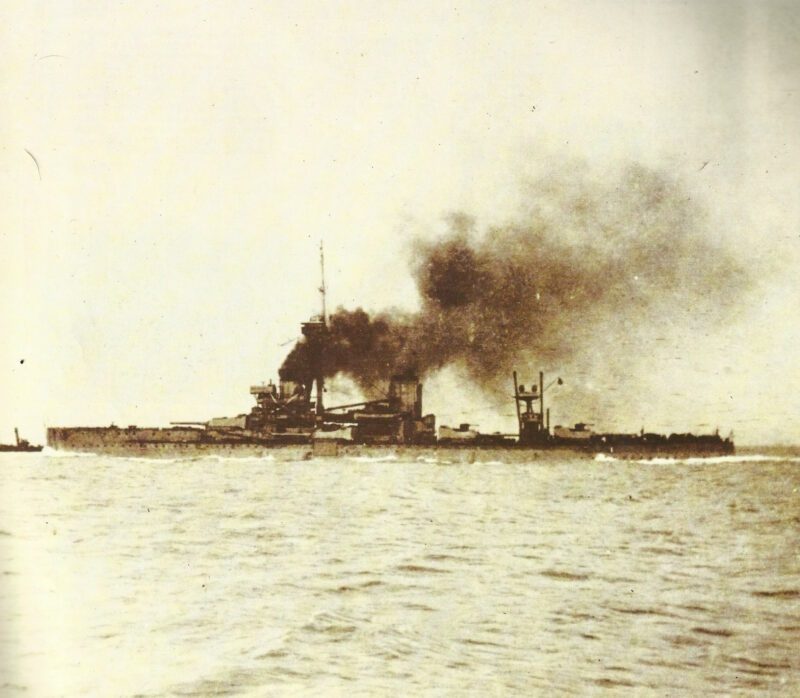
However, there are several models and replicas of the ship on display in museums around the world. Some of the most famous exhibitions are:
National Maritime Museum, Greenwich, UK: the museum houses a collection of models and artefacts associated with HMS Dreadnought and other British warships.
Imperial War Museum, London, UK: The museum has an exhibition entitled ‘HMS Dreadnought: The Ship That Changed the World’, which looks at the history of the ship and its impact on naval history.
Portsmouth Historic Dockyard, UK: HMS Dreadnought is displayed in the museum in the form of a model showing her size and architecture.
Bath Iron Works Museum, Maine, USA: The museum has a model of the HMS Dreadnought built by the works’ employees.
Australian National Maritime Museum, Sydney, Australia: The museum houses a model of HMS Dreadnought that was donated by a private collector.
Although there are no original parts of HMS Dreadnought, the models and replicas in museums and collections around the world are an important part of naval history and show the importance of the ship in the development of modern warships.
Specifications
Dreadnought | Specification |
|---|---|
Displacement | 18,185 tons standard and 22,190 tons full load |
Dimensions length | 490ft/149.3m (between the solders); 520ft/158.4m (keel water line); 527ft/160.6m (overall) |
Dimensions beam | 82 ft / 25 m |
Dimensions draught | 26 ft / 8 m (average) |
Propulsion | 18 Babock&Wilcox Boilers; 4 Parsons turbines with 4 shafts |
Power | 23,000-26,350 hp |
Fuel supply | Coal: 910 tons normal (maximum 2,950 tons); Oil: 1,140 tons |
Speed | 21 kts (construction); 21.6 kts (test drive) |
Range | 6,620 sm at 10 kts |
Main armament | 10 x 12-inch (30.5cm) L/45 |
Secondary armament | 27 x 3-inch (7,6 cm) guns |
Anti-aircraft | - |
Torpedo tubes | 5 x 18-inch (45.7cm) torpedo tubes, submerged on broadside |
Armour belt | 8-11 inch (203-279mm) |
Armour belt ship ends | 4-6 inch (102-152mm) |
Armour upper deck | 3/4 inch (19mm) |
Armour lower deck | 3 inch (76mm) |
Armor main gun turrets | 3-11 inch (76-279mm) |
Armor barbettes | 4-11 inch (102-279mm) |
Complement | 773 |
Laid down | October 2, 1905 (Portsmouth Dockyard) |
Launched | February 10, 1906 |
Completed | October 2, 1906 |
Remaining | scrapped 1923 |
References and literature
Jane’s Fighting Ships of Word War I
The Illustrated Directory of Warships from 1860 to the present day (David Miller)
The Illustrated Encyclopedia of Weapons of World War I (Chris Bishop)
Kriegsschiffe von 1900 bis heute – Technik und Einsatz (Buch und Zeit Verlagsgesellschaft)
Dreadnought in WoWs
In World of Warships (WoWs), HMS Dreadnought is a premium battleship that is rank III on the British research tree. The ship should mainly fire explosive shells at longer ranges. Only at short ranges should armour-piercing shells be used against the sides of other battleships. As ‘Jacky’ Fisher had originally intended, the Dreadnought can also fire six guns with the bow facing the enemy – or even up to eight guns when running away, in which case it only offers a narrow target and can easily escape torpedoes from destroyers.
If you are new to World of Warships, you can download the free game client here:
You will receive the following bonus if you register via the link:
The US cruiser St Louis (rank III) and German light cruiser Emden (rank II), 7 days premium time, 200 doubloons, 20 special camouflage and 2.5 million credits in-game currency.


